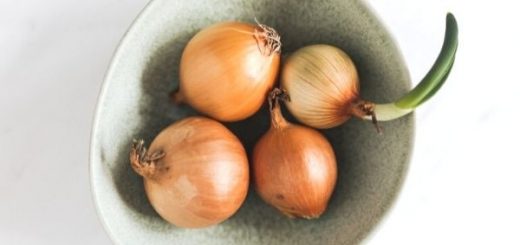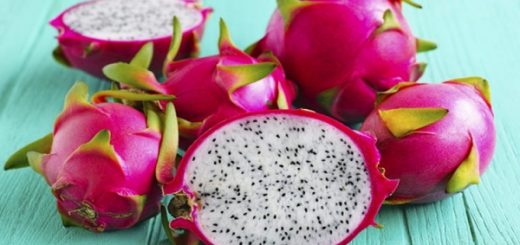Squid: Benefits, Calories, Cleaning and Cooking

When people think of squid, an appetizing and enjoyable table comes to mind. Holiday pleasure, tables with appetizers and different salads and similar pleasant moments were identical with squid. You probably have fried calamari on your table when you eat at a fish restaurant by the sea.
There are different types of fried calamari recipe, known for its soft interior and crispy exterior. It is possible to prepare the recipe as plain or by adding various sauces. When it comes to squid sauces, there are classic sauces and alternative recipes waiting for you to try. The sauce that has become a whole with the squid is the tarator sauce.
In this article, what is squid with all its aspects special to the enthusiast ; how to hunt squid and clean squid afterwards ; protein-rich squid benefits, calories and nutritional values; squid marinade before the most delicious recipes ; Sub-titles are waiting for you for the most popular hot snacks of fish restaurants, crispy calamari recipes with tarator sauce and more!
What is Squid?
- Squid, which is seen as a fish because it is in the seafood category and is frequently seen in fish restaurants, is actually a kind of sea creature. However, it is also possible to name the product as squid fish.
- Squid, which is included in the class of mollusks, is a food that is imagined to be on the table while preparing fish dishes.
- Squid, an unusual sea creature, has many interesting features.
- Squid varieties consist of about 300 different species. For this reason, it is often confused with octopus or cuttlefish. Octopus, squid, and squid from the same family are three different sea creatures, so is squid an octopus? The answer to the question is no.
- The European squid, which is commonly found in Turkey and decorates the tables, is the European squid.
- If it is possible to find squid in all our seas, they are mostly seen in the Mediterranean.
- Those who think which fish is squid can tell the difference with its appearance and taste.
- Squid farming is a preferred activity in our country.
- The intense use of fish dishes in Turkish cuisine has led to this result.
- Extraordinary recipes can also be made with squid eggs, which is an efficient and nutritious product.
- It will be enough to bake the eggs with the sauce you prepared with mayonnaise and spices.
- The squid bone, which is useful at every point, is also known for its interesting benefits.
- For those who have not heard of this feature, “What is a squid bone?” she might be wondering. This piece, also called squid stone, can be placed in the cages of budgerigars to control their breeding status.
What does squid mean? After examining it in detail, you can take a look at the squid cleaning head.
What Are the Benefits of Squid?
- Since it contains high levels of minerals and protein, the body of those who consume squid gains strength and becomes more resistant.
- A remarkable feature among the benefits of squid is that it accelerates metabolism.
- Fat burning accelerates and weight loss occurs faster.
- Among the benefits of squid fish, its positive contribution to mood is important. Since it contains magnesium substance , it calms and makes those who consume the food happy.
- Consuming squid regularly and frequently increases sexual desire and helps those who consume it to have a more positive sexual life.
- It is seen that people who eat squid have less headache problems and chronic migraine problems.
- Its cholesterol-balancing feature and reducing the risk of heart diseases are important contributions to health.
- Those who eat squid 3 times a week have an appetite and enjoy their meals more.
- If you are doing sports regularly while developing your muscles, meet your new favorite food! The dense protein in the content of squid supports muscle formation.
- Thanks to its nutritional values, squid opens the mind and stimulates intellectual activities.
Nutritional Value and Calories of Squid
- When examining the calorie and nutritional value of squid, two separate categories can be considered as sea creature and fried squid.
- The calorie of uncooked squid can be explained as 92 calories per 100 grams .
- The calorie of the Squid pan is 206 calories per 100 grams, in other words, approximately one serving .
- 1 pan of squid contains 30 calories.
- The caloric value increases as the fat is added to the squid. Therefore, it is a better choice to prefer fried Squid as a snack.
- Squid is also a food rich in protein content.
- Those who want to keep in shape can consume squid without worrying about gaining weight; however, care should be taken to ensure that the prepared squid is low-fat.
- Considering the nutritional value of squid, it is seen that vitamins also take a large place in its content.
- 1 serving contains 2 g of iron, 6 g of fiber, 87 mg of calcium, 4 iu of vitamin A and 15 mg of vitamin C.
- In general, it can be said that it is both a delicious and useful seafood product.
- When examined in terms of nutritional value, it can be seen that it preserves its benefits.
Squid Cleaning
When you buy squid, you should pay attention to the freshness of the product; otherwise, it will taste bland and affect your health. So how to clean squid step by step ?
- Those who want to prepare a recipe with squid can choose to purchase frozen squid products that have been cleaned and ready.
- This method is ideal, especially if it is planned to fry squid.
- If squid has been taken from or caught from a fisherman, squid sorting must be done. The same procedures are applied for squid of all sizes.
- It is important to be careful not to burst the ink sac portion of the fish while cleaning it.
- When you pull the tail of the squid, the inner part is easily separated.
- Afterwards, the spine section is removed.
- The squid is prepared when the skin on the upper part is cleaned with the help of a knife or by hand.
How to Hunt Squid?
- “How to catch squid?”, which is stuck in the minds of people who are interested in fishing. Those who examine the answer to the question well and make preparations will get more successful results. It is necessary to use fishing line that is around 6 kg, light and in colors compatible with the hunting environment.
- You can buy squid jigs from stores with fishing products.
- It is necessary to pay attention to color and light when choosing a plumbing.
- Preferring phosphorescent colors and using a method called squid light increases the probability of fishing.
- The squid hook has multiple squid hooks instead of hooks.
- Squid back or squid rapala is one of the important elements in the use of fishing line.
- Choosing green or orange colored ones creates an advantage in catching squid at more weight.
- Although squid fishing may seem like a difficult task at first glance, a large number of squid can be caught as a result of the right steps.
- When using squid hooks it is important to have more than one shackle and to be positioned correctly.
- It is also a good choice to choose night hours for hunting.
- Squid are also used for catching other fish.
- Buying squid bait and hooking it up is a method often used by fishermen.
- Products used as squid bait are also known as squid fakes in the fishermen’s literature.
- It can be said that the squid season starts in October. However, after November, squid fishing activities increase and gain momentum.
How Is Squid Marinated?
It is important to first season the squid in order to catch the squid flavor you are accustomed to tasting in fish restaurants at home. The meat of the squid is somewhat tough when first purchased. In the process of making squid, it is necessary to pay attention to marinade and sauce. Keeping it in sauce for a while before cooking makes it taste more delicious and softens it.
“How to marinate Squid?” The answer to the question is actually quite easy.
- Resting half a kilo of clean and sliced squid in a mixture of lemon juice, sugar cubes and baking soda for a while makes a big difference.
- Optionally, mineral water is used instead of carbonate.
- Before the resting period, it is necessary to knead the squids in the sauce for about 20 minutes .
- After keeping it in the refrigerator for 3 hours , the squid slices are ready for you to cook.
- If you have time, you can apply this process 1 day before cooking.
- Tarator sauce is the most preferred squid sauce . It is prepared with bread crumbs, yogurt, walnuts, lemon, garlic, mayonnaise and spices. Crispy Squid is a refreshing and thick dip sauce next to the pan.
- You can serve your Squid with different sauces according to your taste.
Is it permissible to eat squid?
- Some people who want to taste the unique taste of squid may think of “Is squid halal?” question may arise. Whether squid is halal or not differs according to beliefs.
- While it is permissible for some sects, it is not permissible according to the Hanafi sect.
- According to the belief of the sect, it is forbidden to eat sea creatures that do not look like fish.
- The same is true for products such as mussels and oysters.
- In summary, while it is considered haram for those who belong to this sect and strictly follow its rules, other people can eat squid with peace of mind.
- In addition, squid damages can be seen for those who have problems in the digestive system.
- It is also beneficial for health to be careful not to consume squid more than necessary.











